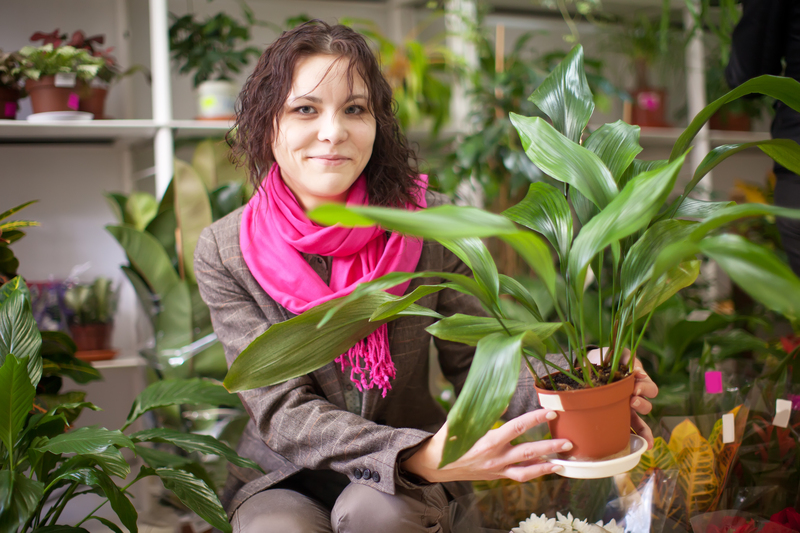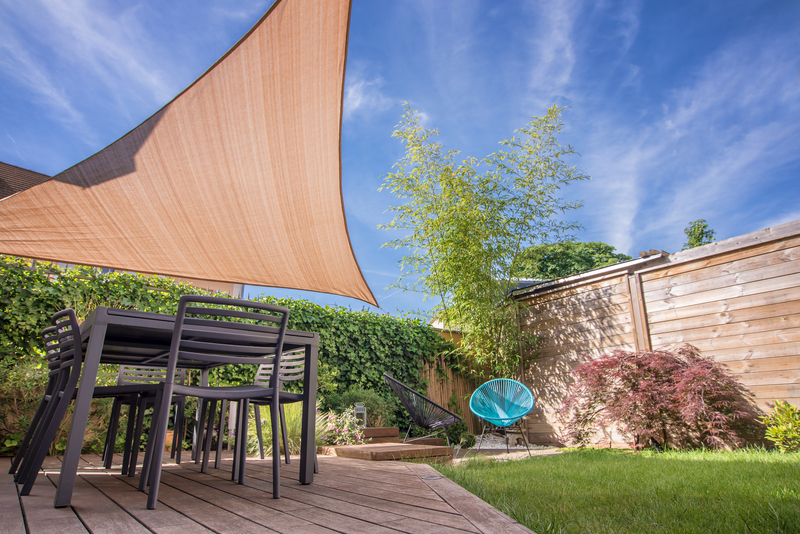Create a Safe, Stimulating Garden Environment for Kids
Posted on 19/09/2025
Create a Safe, Stimulating Garden Environment for Kids
A garden is more than just a place for flowers and vegetables--it's a magical space where children can thrive, learn, and make countless memories. Designing a kid-friendly garden means prioritizing safety while also fostering curiosity, creativity, and a love for nature. In this comprehensive guide, you'll discover practical tips to create a safe and stimulating garden environment for kids, ensuring that every leaf, path, and petal contributes to their healthy development and joy.
Why Involve Kids in the Garden?
Children are naturally drawn to outdoor spaces. Spending time in a garden helps them connect with the earth, develop motor skills, and gain a deeper understanding of the world. _Involving kids in gardening not only encourages physical activity but also ignites their curiosity and imagination._ Studies show that time in nature enhances mood, increases focus, and nurtures lifelong hobbies. Creating a child-friendly garden isn't just about safety--it's about building lasting memories together.
- Physical development: Digging, planting, and exploring build coordination and strength.
- Sensory engagement: Flowers, textures, and scents awaken all five senses.
- Learning opportunities: Gardening teaches science, patience, and environmental care.
- Emotional well-being: Nature calms anxieties and fosters happiness and confidence.

Garden Safety: The Foundation of a Kid-Friendly Garden
Prioritize Child-Safe Materials and Structures
Safety should always come first when planning a child-safe garden. Here are some essential elements to consider:
- Sturdy Fencing: Secure boundaries prevent children from wandering off and keep unwanted visitors (including wildlife or stray pets) out.
- Soft Surfaces: Use bark mulch, grass, or rubber mats under play areas to cushion falls.
- Non-toxic Plants: Avoid plants that are poisonous if ingested or have thorns/spines. Prefer edible or sensory-safe varieties.
- Safe Water Features: If you include ponds or fountains, they must be shallow, covered, or have locked gates.
Inspect and Remove Hazards
Regular maintenance is key to a safe garden for kids. Look out for:
- Sharp tools and equipment: Store away in locked sheds or unreachable places.
- Chemicals and fertilizers: Opt for organic or non-toxic options and keep all supplies out of kids' reach.
- Tripping hazards: Smooth out pathways, remove loose stones, and secure hoses and wires.
Create Visibility and Supervision Zones
Design the children's garden so that adults can always see and monitor play areas. _Open sightlines and clearly defined zones make supervision easy and stress-free._
Designing a Stimulating Children's Garden
Plan with Purpose: Zoning Your Garden
A well-designed stimulating garden environment for kids incorporates different zones that cater to various interests and activities. Consider these zones:
- Active play zone: Install swings, slides, a climbing frame, or open grassy areas for running and ball games.
- Discovery and learning zone: Include raised beds or mini greenhouses where children can plant, water, and observe seedlings.
- Sensory garden area: Plant fragrant herbs (lavender, mint), textured foliage, and vibrant flowers for hands-on exploration.
- Quiet retreat corner: Add a small bench, teepee, or willow den for reading, drawing, or simply relaxing in nature.
Incorporate Natural Play Elements
*Children love exploring their world in natural ways.* Use garden features to spark curiosity and imagination:
- Log trails: Arrange stepping logs or tree stumps for balancing games.
- Secret paths and tunnels: Wind through tall grasses or leafy shrubs for adventure and play.
- Mini wildlife habitats: Place bug hotels, birdhouses, or butterfly-friendly plants to encourage wildlife observations.
- Sand or mud kitchen: Dedicate a spot for sensory messy play with sand, soil, pots, and pans.
Use Vibrant, Engaging Colors and Patterns
Kids are visually drawn to color and contrast. Use painted stepping stones, bright planters, and decorative wind spinners to make the garden visually appealing and exciting. Colorful gardens promote creativity and engage all ages.
Choosing Plants for a Child-Friendly Garden
Safe and Sensory-Friendly Plant Choices
Not all plants are suitable for a kid's safe garden. Choose varieties that are both interesting and non-toxic:
- Herbs: Mint, basil, thyme, and chives are great for touch and smell, plus kids can eat them.
- Edible berries: Strawberries, raspberries, and blueberries provide snacks and learning opportunities. (Supervise picking and check for allergies.)
- Sunflowers: Tall, bright, and easy to grow, they're ideal for a children's garden.
- Succulents: Soft-leaved varieties are fun for tactile exploration.
- Wildflowers: Attract butterflies and offer vibrant colors for pollinator studies.
- Grasses: Ornamental grasses sway in the breeze and invite gentle touch.
Plants to Avoid in a Kids' Garden
- Oleander, foxglove, and nightshade: Highly toxic if ingested.
- Stinging nettles and thorny roses: May cause scrapes, rashes, or allergic reactions.
- Mushrooms and fungi: Discourage wild foraging unless properly identified and supervised.
Encouraging Learning and Discovery in the Garden
Make Gardening Interactive
Involve children in planting, weeding, watering, and harvesting. Assign small toolkits and child-sized gloves, and let them take ownership of a personal patch or pot.
- Label plants: Use colorful signs or painted pebbles to teach literacy and identification.
- Track growth: Keep a simple garden diary or calendar for recording observations and changes.
Integrate Fun Educational Activities
Transform your kid-friendly garden into an outdoor classroom:
- Nature scavenger hunts: Challenge kids to find textures, shapes, and colors.
- Bug and bird watching: Give them a magnifying glass or binoculars for closer inspection of nature's wonders.
- Garden crafts: Paint pots, create leaf prints, or build fairy houses from sticks and stones.
- Cooking with harvests: Make salads, herbal teas, or berry snacks from what you've grown together.
Include Spaces for Creativity and Role Play
Set up outdoor chalkboards, art easels, or fairy gardens. Let imaginations run wild with dress-up boxes for "garden explorers" or "adventurers."
Top Tips for Maintaining a Safe, Stimulating Garden
- Inspect regularly: Check equipment, fences, and plants for hazards or repair needs.
- Practice sun safety: Add shade sails, canopies, or large umbrellas, and have hats and water handy.
- Establish garden rules: Teach kids which plants are safe, how to use tools, and where play is allowed.
- Set up comfortable seating: For supervising adults and for children to rest or observe quietly.
- Encourage wildlife: Add bird feeders, water bowls, or native plants to attract beneficial insects and birds--teaching valuable lessons about ecosystems.

Frequently Asked Questions About Kids' Garden Safety and Design
What materials are best for building raised beds for kids?
Use untreated wood, recycled plastic planks, or metal beds that are smooth and free of splinters or sharp edges. Elevate beds to an accessible height for kids and consider rounded corners for extra safety.
How do I keep my child safe from insects and bites in the garden?
Dress kids in long sleeves, pants, and closed shoes. Use _child-safe insect repellents_, avoid standing water where mosquitoes breed, and plant insect-repelling plants like lemon balm, lavender, or marigold.
How can I include a water feature in a child-friendly garden?
Consider a shallow pebble pond, a bubbling rock, or a small fountain with a removable cover. Always supervise children around water and install mesh or fences where necessary.
How do I maintain a stimulating garden all year round?
Grow a mix of perennials and annuals, plant bulbs for spring, and use winter-hardy varieties for year-round interest. Rotate activities with the seasons--autumn leaf crafts, winter bird-feeding, spring planting, and summer harvesting.
Final Thoughts: Nurturing Growth, Safety, and Wonder
_Creating a safe, stimulating garden environment for kids isn't just about fences and flowers--it's about shaping a nurturing world where young minds bloom._ By prioritizing safety, planting thoughtfully, and encouraging exploration, your children's garden becomes a sanctuary for play, learning, and joyful memories.
Whether you're blessed with sprawling lawns or a compact courtyard, the possibilities are endless. Start small, involve your little ones, and watch as your garden--and their love for nature--grows. Every safe, stimulating space you create today plants the seeds for a lifetime of curiosity, well-being, and outdoor adventure.

